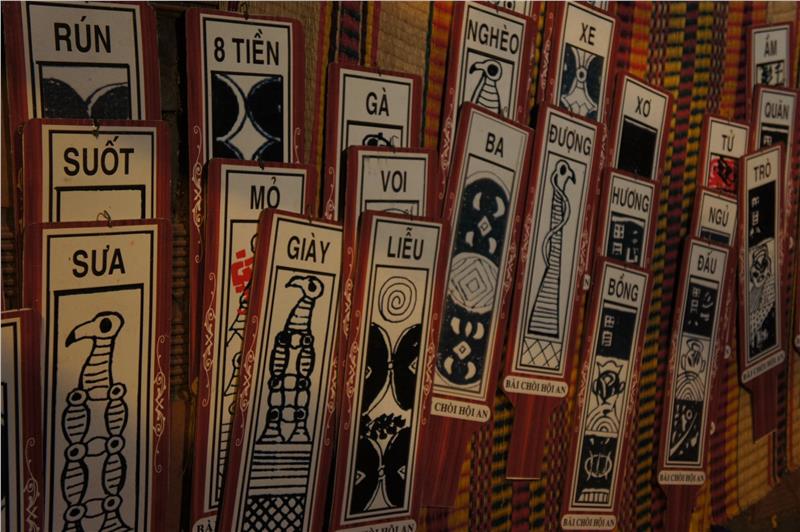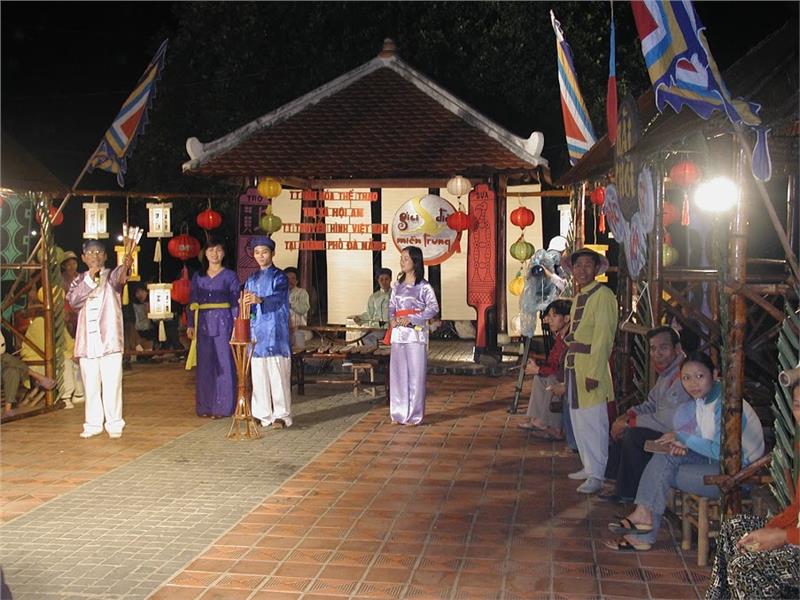International Conference on "Bai Choi singing and similar art forms in the world" was held in Quy Nhon City in Binh Dinh province in two days January 13 and 14, 2015. The workshop clarified many issues in many interesting aspects. It proved that the unique features and characteristics of Bai Choi in the Middle part of Vietnam are worthy to be honored as intangible cultural world heritage. The art form should be preserved and promoted.

Bai Choi is an unmatched Vietnamese game combining folklore and a competition. The traditional folk art is one of the innovative characteristics of intangible culture of Viet people in Central Vietnam. Bai Choi art originated from a traditional game called Bai Choi (hut cards). It is a cultural and recreational form held on early days of a new year in provinces in Central Vietnam (from Quang Binh to Khanh Hoa). In terms of origin, some documents of Vietnam and other countries show that Bai Choi appeared since early 22nd century. In Larouss musicale by G.L Bouvier published in Paris (1928), there is a chapter of “The popular song of Annamese” to talk about Bai Choi.
He believed that Bai Choi had been established and developed since 1470. But he could not find evidence to prove. Later, some researchers of Quang Binh and Binh Dinh provinces hypothesize based on folklore that Dao Duy Tu (1571-1643), a Confucian living in the late Le Dynasty and early Nguyen Dynasty was the first person who created and taught Bai Choi game in this area. However, so far, there is not enough evidence to prove that hypothesis is correct. Before 1945, Boi Choi was very popular, especially in the South Central Coast of Vietnam. During wars against the French and American, Bai Choi was used a lots, taking an active part in encouraging fellow soldiers, slamming enemies, praising mirrors having contributed to the glorious victory of the nation. During this time with the Vietnam traditional art was also called Bai Choi war resistance.
During 1975 - 1990, Bai Choi singing was eroded and put at risk of being forgotten. In late 1990, Bai Choi folksongs were gradually restored, especially from 2010 when Ministry of Culture, Sport and Tourism had policy on restoring the traditional cultural art form. The art form was favored by a large number of local people in nine provinces in Central Vietnam. At the conference, after discussion based on assumptions about the birth of Bai Choi that all local and international scientists gave overlapped, Bai Choi was probably established in the sixteenth century.

In terms of art value, Bai Choi is a performative art as well as social practices in Vietnam folk culture. The public can enjoy many kinds of art forms such as folk poetry, shows, theater excerpts, telling stories and traditional musical solo performance... The unique beauty of Bai Choi is that the narrator is unlike conventional narrator. The narrator is accompanied by moves and instruments. In particular, there is only one person who can play many different part but have an effective natural expression that is closed and easy to understand but profound. It is solo art of Bai Choi. Simple, rustic and sweet melodies of Bai Choi play an important role in daily spiritual life of locals.
Through the scientific report of both local and international researchers, in some other countries in the world, there are solo art performances like Vietnamese Bai Choi, such as Pansori in Korea and other types in China, Algeria and India... Joining in the conference, Mr. Yves Defrance analyzed about the second-to-none feature of Bai Choi. "It is interesting when we found that Bai Choi has similar points as Âsiklik traditional art of Turkish, people who migrated from this community to other communities... Indeed, solo in Bai Choi has in common with traditional forms in Asia as Pansori of Korean... Bai Choi deserves to be enrolled in the list of intangible world cultural heritages", he said. Dr. Seong Yong Park, General Director Assistant of Korean ICHCAP Strategic Project Office, stated the heritages of Korea as Baltal, Jindo dasiraegi and Pansori, are artistic forms having in common with Vietnam Bai Cho. And, Pansori has been enrolled by UNESCO in the list of Intangible Cultural World Heritage.
This conference brought the opportunity to discuss in depth and constructive contribution to conserve issues and promote the intangible cultural World Heritages in Vietnam, including Bai Choi; at the same time, intangible cultural heritages are believed to be reserved for generations if our efforts come into practical actions. Through the conference, opinions and discussion of scientists will shed more light on issues of formation and contagious development with unique values and characteristics of Bai Choi. Therefore, it is premise for relevant authorities to build the scientific profile of Central Vietnam's Bai Choi to propose UNESCO for enrollment as Intangible Cultural World Heritage.